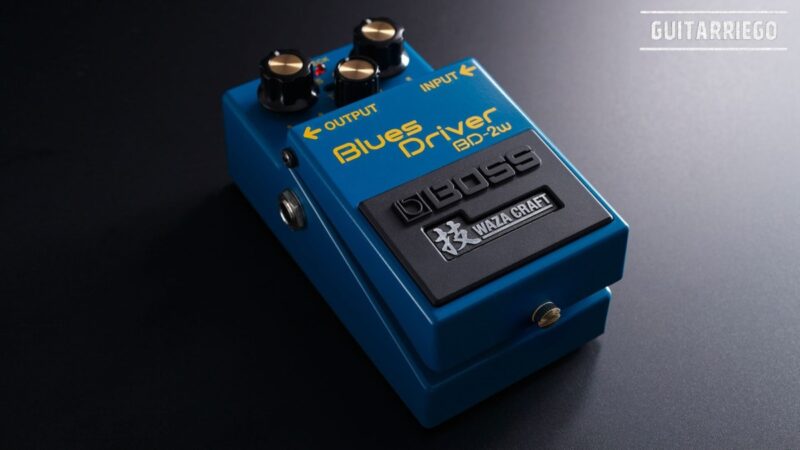The history of Squier Stratocaster and Telecaster guitars
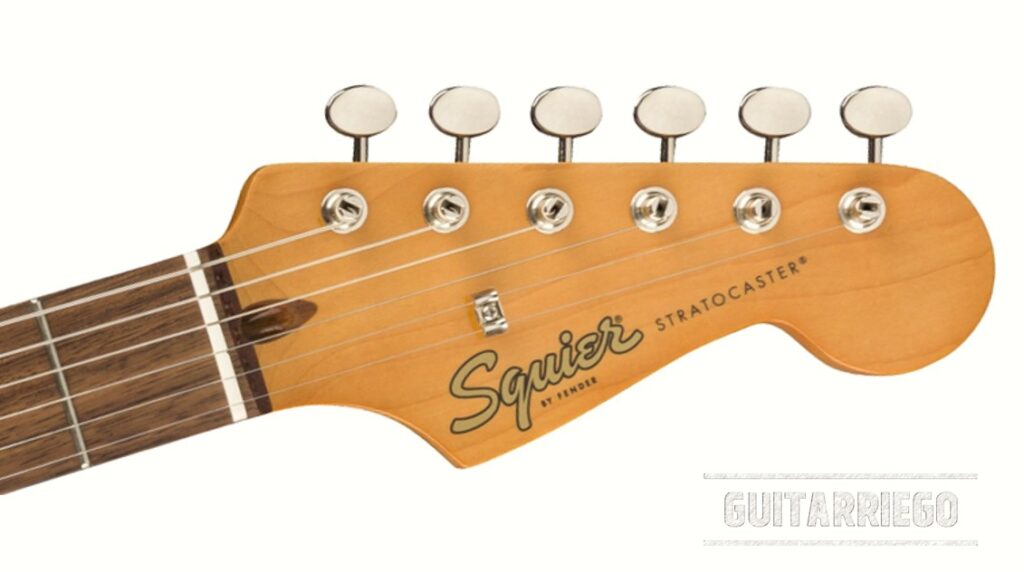
History of Squier, born to fight copies, today one of the best-selling guitar brands in the world, even that Fender.
History: the beginnings of Squier
Squier is recognized worldwide by musicians as a Fender subsidiary brand. But to know the origins of this so controversial “second line” of the renowned brand, we must go back in time, until the middle of the 19th century.
Jerome Bonaparte Squier was an English immigrant and renowned Luthier who worked together with his son, Victor Carroll Squier, in his workshop located in the city of Boston, United States. There, they not only repaired, but also built violins. Their violins were highly regarded and often called “the American Stradivarius.”

Squier, strings factory for musical instruments
When it was already the year 1890, Victor, Jerome’s son, decides to separate from his father by opening his own store in Michigan, United States. Once established, the manufacture of strings for violins, banjos and guitars begins. Which bore the already recognized surname Squier. His business grew rapidly, and he went from manual manufacturing to industrialization. To do this he turned a pedal sewing machine into a string winder. Thus, he was able to produce 1,000 good quality strings per day at a reasonable price. This allowed him to become popular throughout the United States.
In the 50s of the 20th century, when Fender Electric Instruments began production of the new electric guitars, VC Squier supplied them with strings. In 1963, the VC Squier Company became the official supplier of strings for Fender instruments, which were marketed under the Squier designation.
Check out our comparison of the Fender Stratocaster and the Squier Stratocaster.
Fender acquires VC Squier Company
In 1965, the VC Squier Company was bought by Fender in a very successful commercial decision. It is worth noting that at this point the company was only dedicated exclusively to the manufacture of strings. As a result of this merger with the guitar giant, part of its staff moves to a new bass string factory founded a year earlier, GHS.

In that same year, 1965, Leo Fender sold the company to CBS.
In the mid-1970s, the Squier brand was withdrawn from the market and the strings began to be marketed as Fender.
Then, after several years of falling sales, in 1981, the new owner of Fender hired three executives to reverse the company’s situation. They were John McLaren, William “Bill” Schultz and Dan Smith, with proven experience in the business from their work with Yamaha Musical Instruments in the United States.
Dan Smith recalled that one of the first things he did to begin to understand why sales declined was to “listen to user complaints.” And one of them was the great difference that existed in the contours of the bodies of the guitars that were stacked in the factory. However, at that time of neglect, which responded more than anything to the idea of conceiving more accessible models to increase sales, these increased, achieving its basic objective.
War against Japanese copies
The market was littered with blatant copies and in some cases vintage Fender clones of Japanese origin. Some Japanese imitations were of very good quality with low price.
Thus, within the vast strategies to revitalize the brand was to combat imitations or “counterfeits” from Japan. Among the imitating instrument factories was Tokai, one of the largest and best “copiers.” Not only they made Fender products’ copies, they also copied Gibson models.
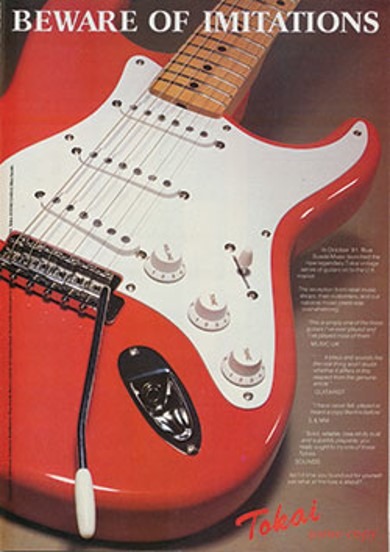
Although the objective was to compete with the lowest priced copies in the profitable Japanese market, Japan will have a more than fundamental role in the history of Fender, and of course, of Squier. In the land of the rising sun, the first commercial and marketing strategies would be born through “second brands”.
So the dilemma was, how to create a competitive product without losing quality. So all the eyes of the Fender executives were on Japan.
Japan had an excellent level of manufacturers. The imitations themself were of excellent quality and were serious competition for the American Fender.
In an interview in 1978, Paul Stanley, one of the legendary members of Kiss. He told about his visit to the Ibanez facilities in Japan. Highlighting the incredible level of professionalism and completion that the instruments manufactured they had. It is worth mentioning that Ibanez manufactured a signature model for Paul Stanley.
You might be interested in our review of the best 15 cheap electric guitars for beginners.
Fender lands in Japan
In March 1982, CBS established its operation in Japan. Thus, Fender Japan, Ltd., an alliance between Fender Musical Instruments Corporation, Yamano Music Instrument and Kanda Shoki was founded.

By May 1982, Fender Japan had six vintage-style guitar and bass models: ’57 and ’62 Stratocaster, ’52 Telecaster, ’57 and ’62 Precision Bass®, and finally ’62 Jazz Bass®.
Initially the commercialization of the guitars made by this alliance was in the Japanese market. But soon, given the excellent quality of the guitars and their low cost, and the flood of Japanese copies surged over the European market, Fender also exported guitars to Europe. To do this, they used a new brand, and thus the history of Squier guitars was born.
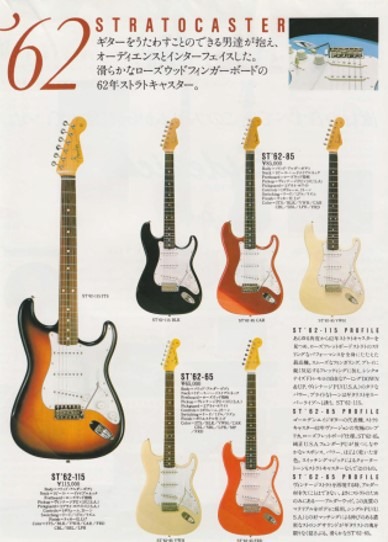
Fender revives the Squier brand
To compete with the Japanese imitations on the old continent, Fender exported its Japanese guitars under the Squier series. The first series is known as Squier JV, because of “Japanese Vintage”.

Thus, while the Fender Japan are exclusively distributed in the Japanese country, practically those same guitars, under the Squier Series, are marketed in Europe.
This is why the Squier from the early 80’s, the JV, are so prized. These early Squier are actually nothing more than Fender Japan with minimal changes. A small Squier Series logo on the headstock where the Original Contour Body decal would normally appear, and a cheaper zinc tremolo block instead of the usual steel one. Even musicians of the stature of George Harrison, John Mayall, Steve Rothery and Yngwie Malmsteen among others, have played them.
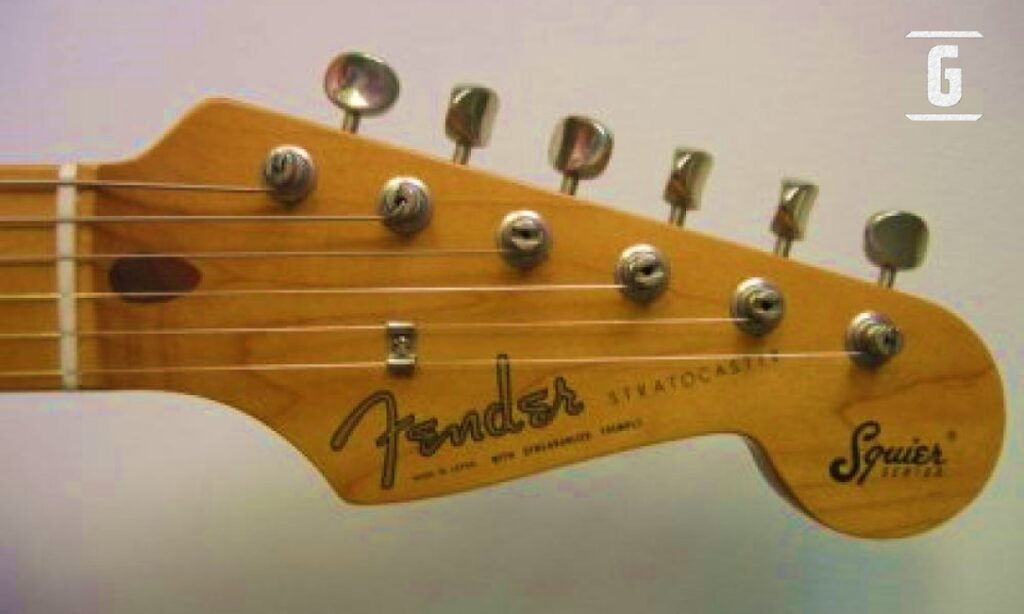
The Fender Squier JVs were manufactured between 1982 and 1984. First with Fender decal and with Squier Series decal in 1982. Then, from 1983 and a drop in the quality of the guitars, although it was still high, Fender decided to change the large Squier decal and separate the by Fender decal. Then, in 1985, with new entry level models, the currently known Squier by Fender appeared, thus becoming, definitely, a second cheap brand. The rest is already known history of Squier.

How were Squier guitars born?
The appearance of Squier guitars was a matter of chance, or rather improvisation. Given the lack of foresight to register a “new brand” for this series, and avoid all the bureaucracy of preparing and registering it, it was decided to use the Squier brand, since Fender already owned its rights. In this way, an instrument of lesser value was put on sale, practically half that of an American Fender, but also of very good quality. Thus, those who could not or did not want to pay what a Fender cost, could buy a quality cheap guitar without having to buy a copy, since it had the backing of the company founded in Fullerton, California.
Thus, in 1983, Fender began to market Squier guitars in the United States, offering the market an “official copy” at cheap prices.
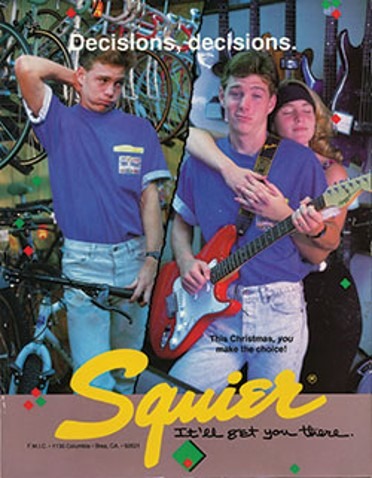
Take a look at the best electric guitar brands.
Fender Japan in the US market
However, all these strategies to reverse Fender’s financial situation failed to prevent a new crisis in 1984. Thus, CBS puts Fender up for sale. A consortium made up of employees and its current president, William Schultz, bought the company.
Remarkably, the Fullerton plant was not included in the sale, forcing, ironically, that most of the instruments manufactured during 1985 came from the factory located in Japan, while Fender was setting upits new plant. The new Fender factory is the current one in Corona, located a few miles from Fullerton, California.

Evolution of Squier guitars
Over the years, Fender expanded its list of products, from much more expensive series such as the Custom Shop, American Vintage, Deluxe, among others, to more economical models, such as the Mexico or American Special lines. Squier was reserved for the entry-level ranges, that is, for beginner guitars.
However, the success of Squier allowed it to incorporate new series and higher quality models such as the excellent Classic Vibe or Deluxe series, which are very close to the level of the lower Fender ranges. In this way, today, Squier is no longer an option for beginners, but for guitarists of any level who are looking for a cheap alternative to American Fender.
Squier news
The surprising history of Squier shows us that from an initial idea driven only to compete with copies from Japan, the brand managed to far exceed that strategy that emerged almost at the last CBS board meeting at Fender.

Today Squier occupies a privileged place among all guitar brands, being a more than competitive option and one of the best-selling brands in the world. Not only for the beginning guitarplayers, but also for the amateur or professional musician.
You can share opinions or also chat about this and more with other musicians in the comments section.
Also check out our how to upgrade a cheap electric guitar guide.
Also follow us on our Instagram @guitarriego or Facebook.






